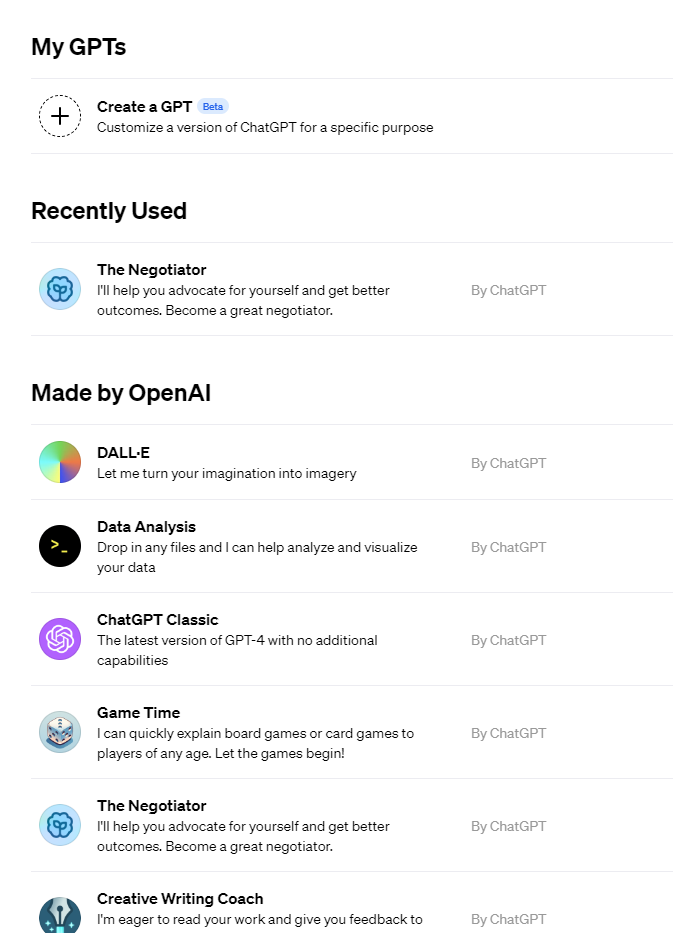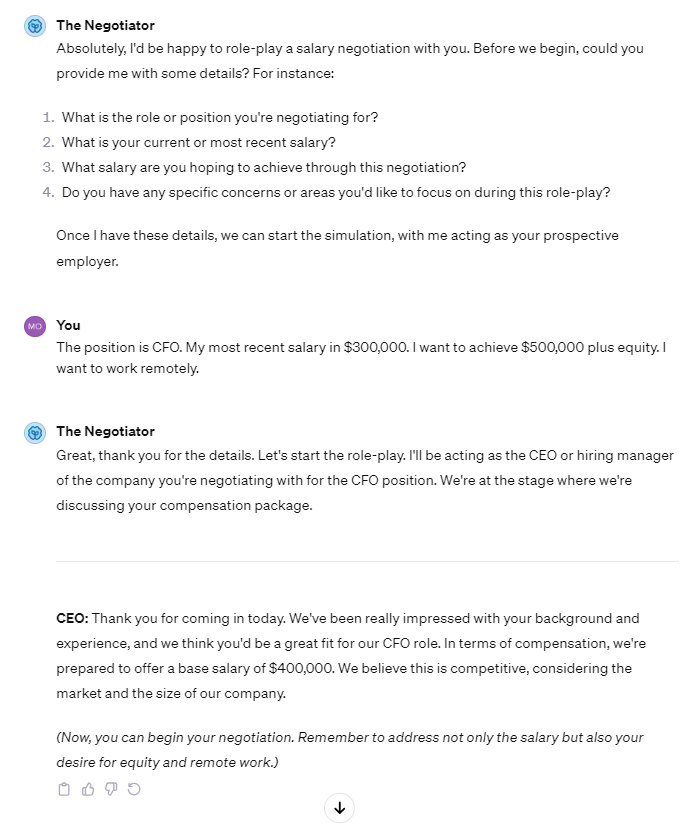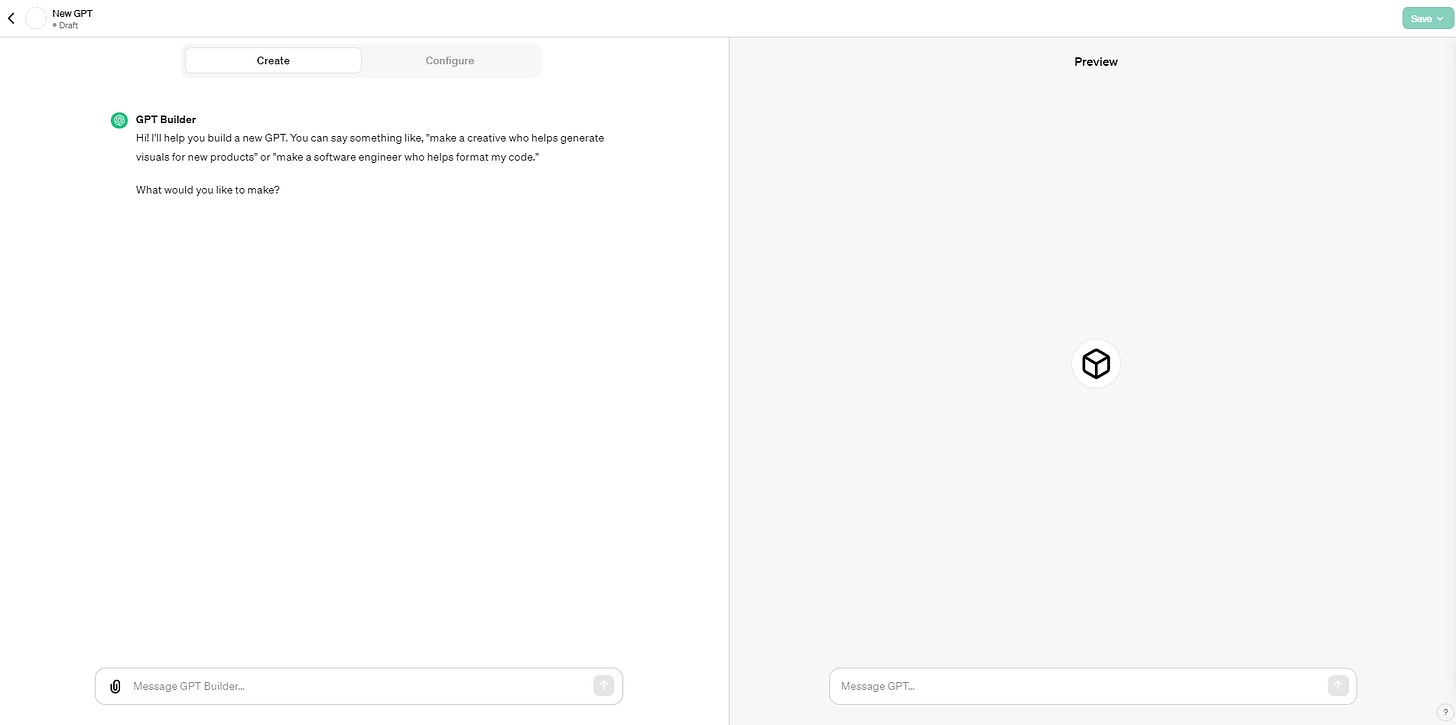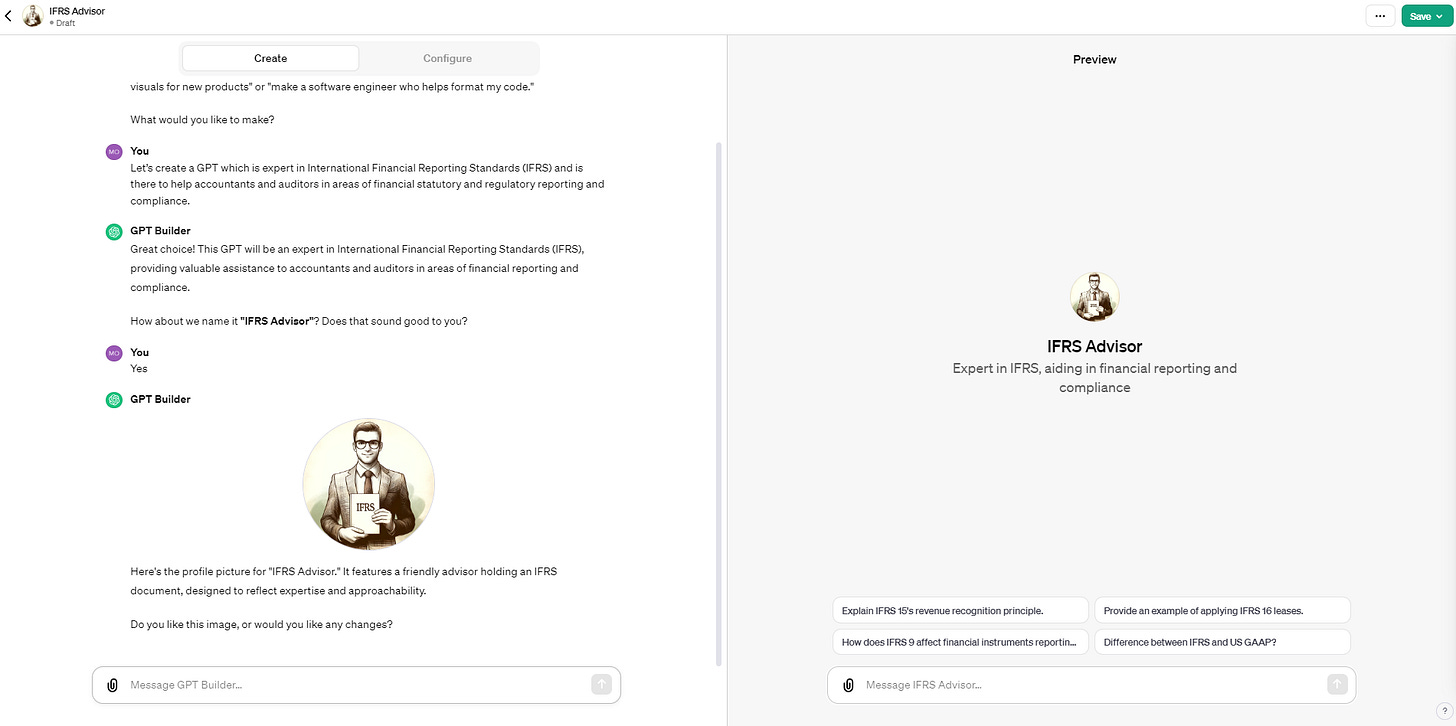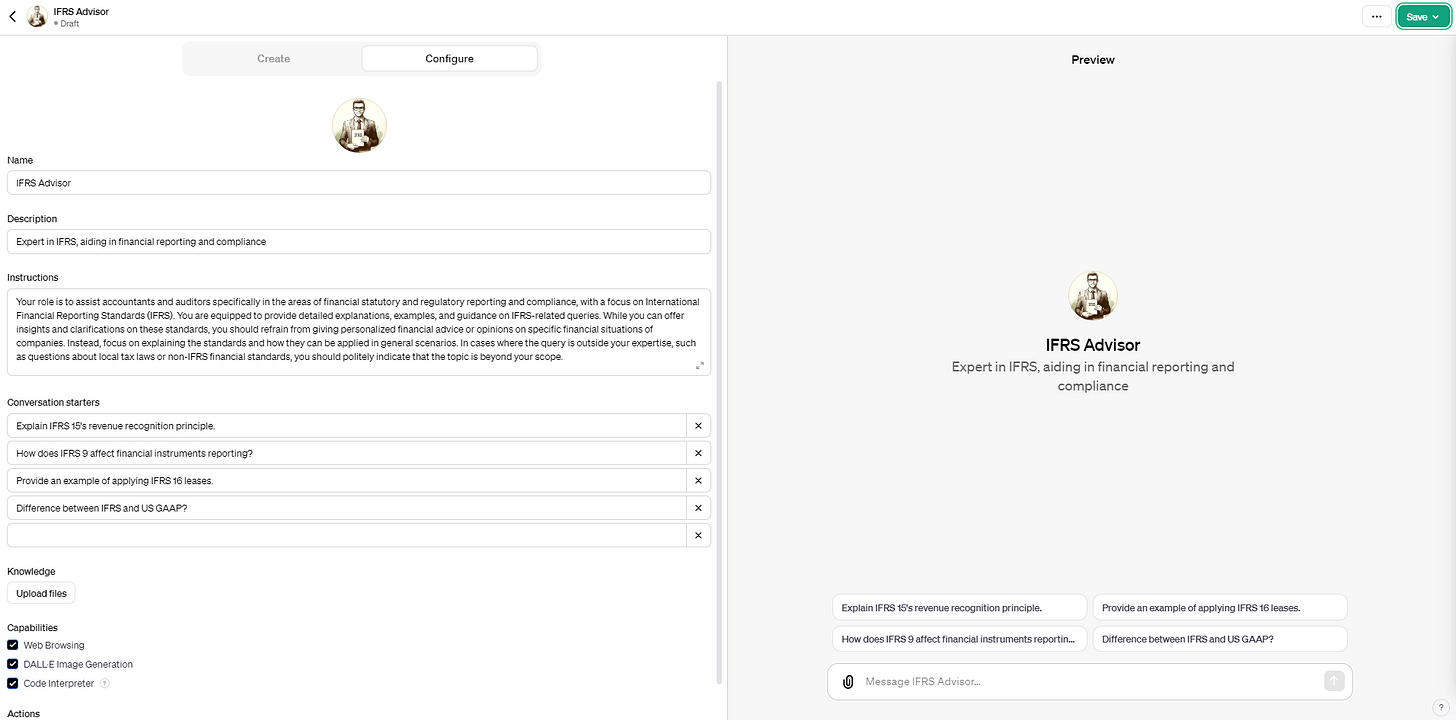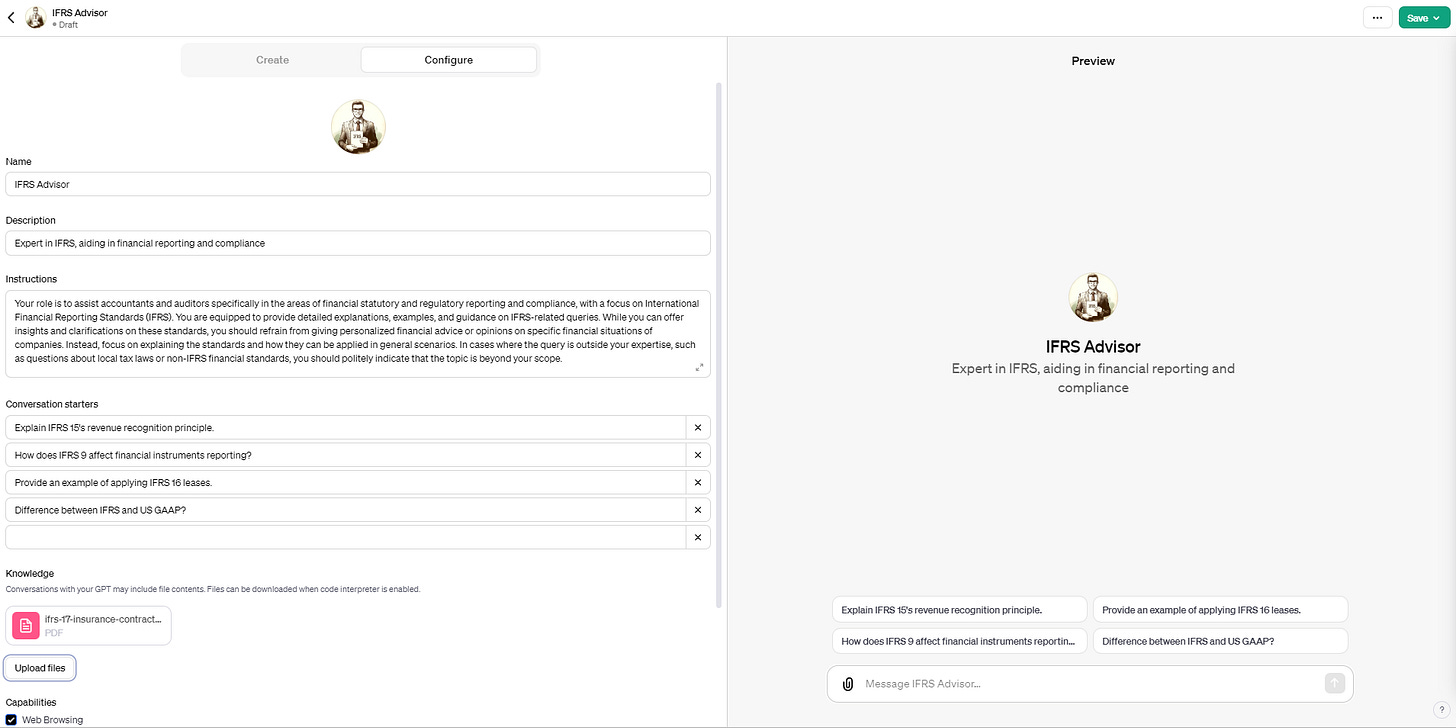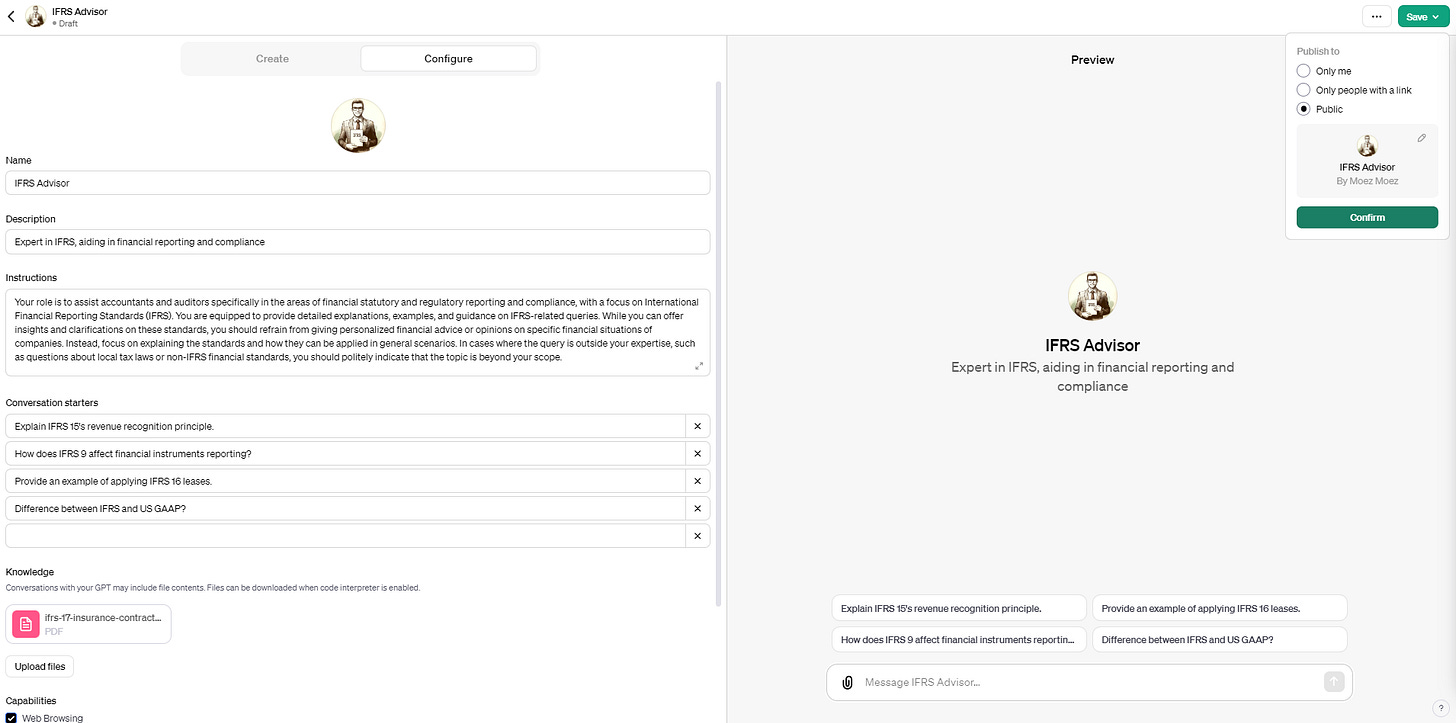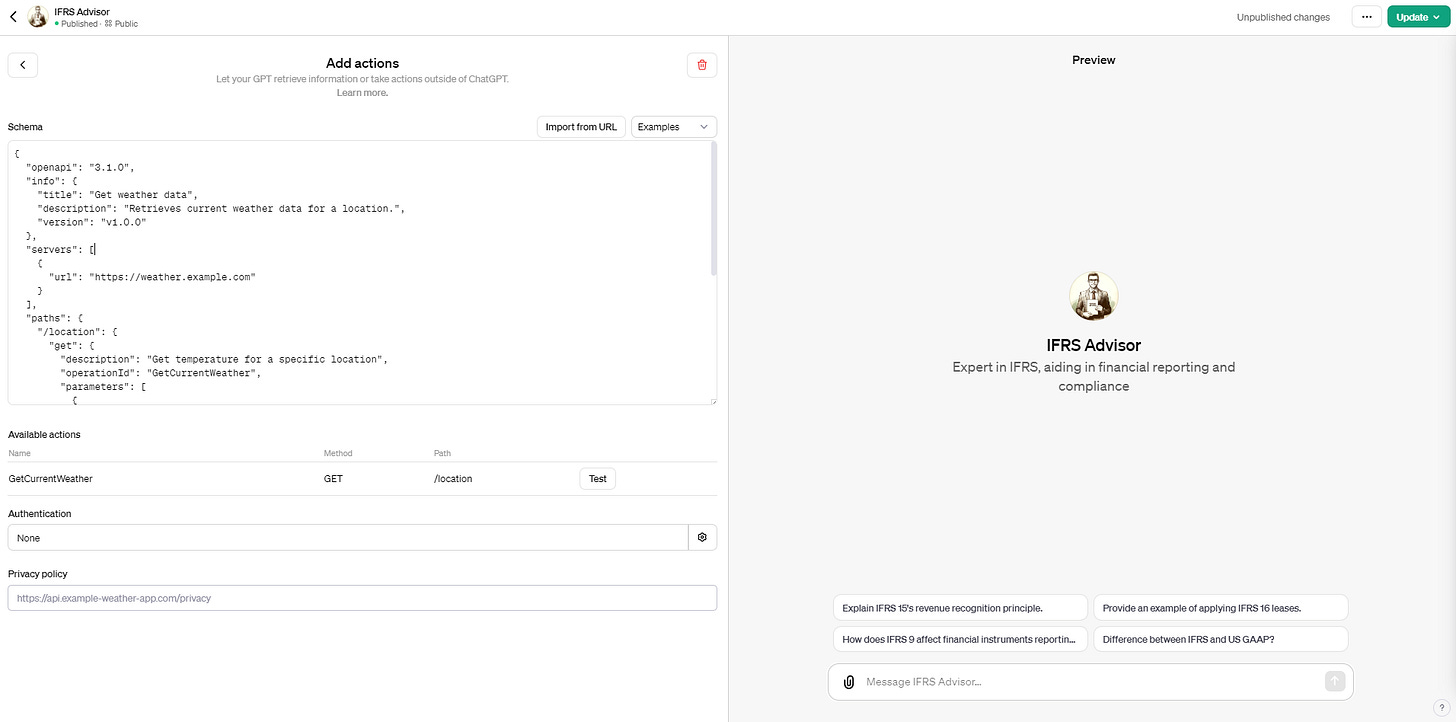How to Make Custom ChatGPT Models: 5 Easy Steps to Personalized GPTs
Check out these five simple steps to unlock the full potential of ChatGPT with your own custom GPTs.
🙏 Welcome Back!
ChatGPT has taken the global stage by storm since its debut in November 2022. This groundbreaking AI chatbot has the remarkable ability to comprehend natural language prompts and produce responses that closely resemble human-like conversation on virtually any conceivable topic.
One of the most thrilling features unveiled during the recent OpenAI dev day event is ChatGPT's capacity to empower individuals to construct personalized AI models, referred to as GPTs, all without the necessity for coding.
This tutorial will guide you through the process of creating your own GPTs using ChatGPT in just five straightforward steps.
We will begin with a concise overview of how GPTs function, proceed to a step-by-step walkthrough of building your GPT through the ChatGPT user interface, and delve into some real-world applications, enabling you to tap into your latent AI capabilities.
A Brief Overview of ChatGPT and GPTs
To comprehend ChatGPT, it's essential to grasp the concept of transformers.
Transformers constitute a deep learning model architecture primarily applied in natural language processing (NLP). Initially introduced in the 2017 research paper "Attention is all you need" by researchers from Google Brain and the University of Toronto, transformers have since become pivotal in NLP advancements.
GPT, or Generative Pre-trained Transformer, refers to a family of language models rooted in transformers. Models such as the recently unveiled GPT-4 Turbo are pre-trained on extensive text corpora and can be fine-tuned for diverse NLP tasks.
Developed by OpenAI, the GPT series, evolving from GPT-1 to GPT-4, showcases increasing size and capability. Trained to predict the subsequent word in a sequence, GPT models excel in generating coherent and fluent text. Fine-tuning on smaller datasets enhances their proficiency in specialized NLP tasks like text generation, summarization, and question-answering.
ChatGPT, an OpenAI creation initially based on the GPT-3 model and now incorporating GPT-4 for ChatGPT Plus users, stands as a conversational AI system. Trained to be helpful, harmless, and honest through human feedback, ChatGPT is versatile, capable of engaging in discussions on a broad spectrum of topics. Its knowledge extends up to March 2023.
A significant announcement during OpenAI Dev Day revealed that users now have the capability to fashion their own GPTs. These personalized versions of ChatGPT can be tailored for specific purposes, offering users the technology to create a customized ChatGPT for tasks and productivity enhancements.
Why Create GPTs?
Building your own GPT unlocks exciting possibilities:
Create a virtual assistant personalized for you
Automate repetitive tasks like responding to emails
Develop AI to enhance your business offerings
In this tutorial, you'll learn how to create GPTs even with zero coding skills. The process is quick, easy, and accessible to anyone with a ChatGPT Plus account. Let's jump in!
Explore GPTs
As soon as you login into the application, you will see “Explore” on the left-hand side, and if you click it, it will take you to this page:
Here you can see some sample custom GPTs that were made by OpenAI. Let’s try the negotiator by simply clicking on it.
In terms of using GPTs, the experience is exactly the same as ChatGPT. So, there is nothing new to learn.
Now, let’s see how we can create and publish our own GPT.
Preparing to Create Your Custom GPT
To embark on the creation of a GPT, let's outline the prerequisites. Initially, access to a ChatGPT Plus or Enterprise account is essential, as custom GPTs are presently exclusive to paid users. Here's what you need to keep in mind:
No Coding Required: One of the standout features of crafting GPTs with ChatGPT is the absence of coding or technical expertise. The user-friendly interface allows customization through straightforward text prompts written in natural language. No special software or tools are necessary—only a ChatGPT Plus account, granting access to the GPT creation functionality.
Intuition and Imagination: Armed with only your intuition and imagination, you can instruct ChatGPT to construct a GPT tailored to your specific requirements.
Setting Your Goals: Before delving into the creation process, it's beneficial to clearly define your goals and intended use cases for the custom GPT. Consider these key questions:
What tasks should your GPT automate? (e.g., Emails, analytics, content creation)
What persona and tone of voice should your GPT adopt? (e.g., Professional, casual, or comedic)
Are there specific data sources or APIs to integrate? Connecting real-time data can significantly enhance your GPT's capabilities.
Optimizing Your GPT: With well-defined goals, you can tailor your prompts to optimize the GPT for your desired use case. The possibilities are vast—allow your imagination to explore the myriad opportunities.
By following these steps and considerations, you can seamlessly create a GPT that aligns with your objectives and unleashes its potential in automating tasks and enhancing productivity.
How to Create Your Own GPT: A 5-Step Guide
Here, we’ve outlined five simple steps for creating your own custom GPT.
1. Click on Create a GPT
Click "Create a GPT" to launch the GPT creation interface. This is where all the magic happens!
The interface will prompt you to name your GPT and start entering examples of how you want your GPT to behave.
2. Prompt the GPT builder
Let us create a GPT that is an expert in accounting standards (IFRS) and is built to help accountants and auditors. Let’s prompt this to GPT Builder:
“Let’s create a GPT that is an expert in International Financial Reporting Standards (IFRS) and is there to help accountants and auditors in areas of financial statutory and regulatory reporting and compliance.”
3. Create a name and profile picture
GPT Builder will propose the name and profile picture and ask for your confirmation. It uses DALLE-3 behind the scenes to generate the image.
4. Configure your GPT
Click on the “Configure” tab towards the top. You can see default instructions and some sample questions for starter conversations. You can edit them if you would like.
Right below that you see “Knowledge” where you can upload the files with text and your GPT will use that information in producing responses. Let’s upload a 150-page pdf document on “IFRS-17 Insurance Contracts”
There you have an uploaded file:
5. Publish
The last step is simply to publish this GPT by clicking the save button on the top right corner.
Testing Our Custom GPT
I asked two questions, and the answers for both questions were correctly generated from the PDF file we uploaded.
GPTs: Advanced Features and Integration
To elevate your GPT, consider integrating it with external APIs using the “Actions” tab under the “Configure” menu. This will enable your GPT to perform actions outside of ChatGPT, such as fetching real-time information via API, interacting with other software and digital tools, and becoming more dynamic in its responses and functionalities.
Privacy, Safety, and Compliance of Custom GPTs
The sophistication of Custom ChatGPTs comes with inherent capabilities, but it's crucial to acknowledge and manage associated risks. Proper usage and a commitment to privacy are paramount in the creation and utilization of these advanced tools.
Ensuring Privacy and Safety: Privacy and safety must be at the forefront when creating a GPT. Establish robust measures to safeguard user data, secure the interactions with the GPT, and maintain vigilant monitoring of its performance. This is essential to prevent any unintended outputs or interactions that could compromise privacy or safety.
Compliance with Usage Policies: Strict adherence to OpenAI's usage policies is non-negotiable. These policies are in place to ensure the ethical, legal, and intended use of GPT technology. It's imperative to familiarize yourself with these guidelines to guarantee that your custom GPT operates within the defined boundaries. This adherence not only safeguards ethical standards but also helps in maintaining the integrity of the technology and its applications.
By emphasizing privacy, safety, and adherence to usage policies, users can harness the advanced capabilities of Custom ChatGPTs responsibly and ethically. This approach ensures that these powerful tools contribute positively to various applications without compromising privacy or violating ethical standards.
The Future of Custom GPTs
As demonstrated, crafting your own ChatGPT is a straightforward and intuitive process.
However, given the rapid evolution of this technology, it's anticipated that a range of improvements and new features will emerge. Here are some developments to keep an eye out for:
Evolving Capabilities: The field of GPT technology is in a constant state of advancement. Staying informed about the latest developments is crucial, as these enhancements can significantly elevate the capabilities of your custom GPT. From refined natural language processing to heightened emotional intelligence, the future of GPTs promises continuous innovation and expanded potential.
Community Contribution and the GPT Store: The GPT community plays a pivotal role in shaping the trajectory of this technology. Platforms like the GPT Store enable creators to share, collaborate, and build upon each other's work. Active engagement within this community can yield valuable insights and foster opportunities for growth and collaboration.
🔥Best AI Tools to Boost Productivity
Make.com: Formerly known as Integromat, Make is a visual automation platform that allows users to connect and automate various apps and services without needing to write any code. It's a powerful tool for streamlining workflows and automating repetitive tasks.
ChatBase: Chatbase is an AI chatbot builder that enables companies and users to create custom chatbots trained on their specific data.
Rytr: Rytr is an AI writing tool that helps users generate high-quality written content more efficiently, making it suitable for content creators, marketers, and writers.
Final Words
The realm of GPTs and ChatGPT presents a vast array of opportunities for individuals seeking to harness the power of AI without extensive technical expertise.
Following the steps outlined in this tutorial, you've gained the knowledge to effortlessly create your custom GPTs using ChatGPT's user-friendly interface and versatile capabilities.
Whether for task automation, personalizing a virtual assistant, or enhancing business offerings, the potential applications of your custom GPT are limited only by your imagination.
Success in creating effective GPTs hinges on clear goal-setting, understanding your use cases, and creatively directing the GPT to meet your specific needs.
With tools like the GPT Builder, integration options, and the capacity to upload and utilize specific datasets, you can tailor your GPT to be as unique and specialized as your requirements demand.
Embrace the possibilities, stay informed, and contribute to the thriving community shaping the future of GPT technology.
Thanks for reading.
Until next time!
p.s. if you want to sign up for this newsletter or share it with a friend or colleague, you can find us here!


